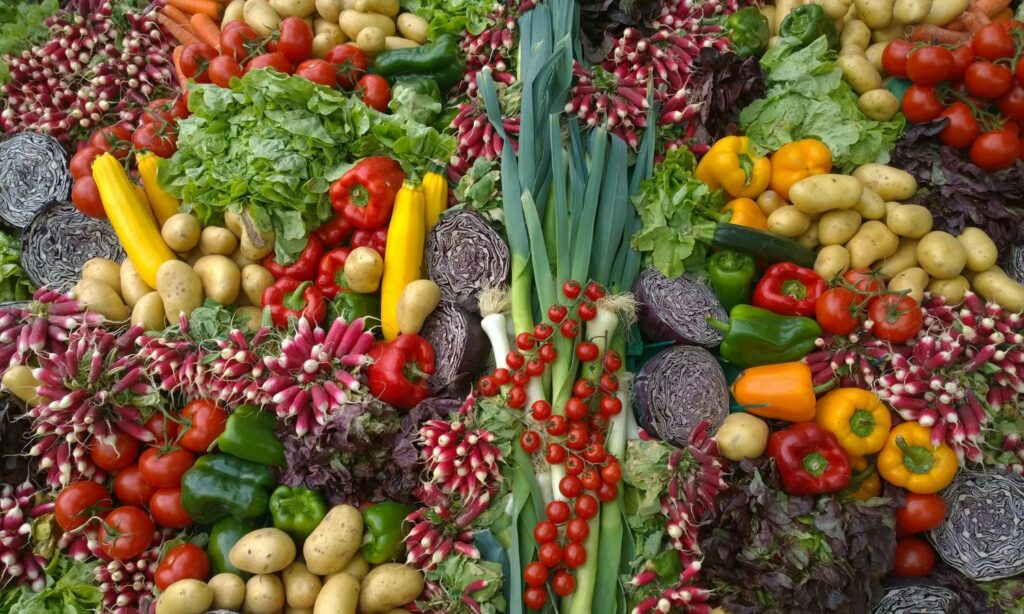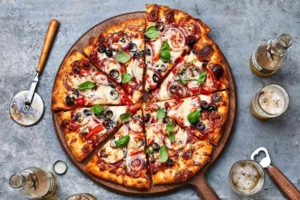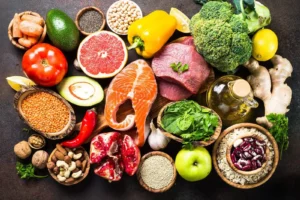Hey there, picture this: It’s a crisp October evening, and I’m in my kitchen, the kind that’s seen better days—scarred cutting boards, a spice rack that’s more museum than menu. The air smells of simmering lentils and garlic, and my neighbor Maria, who grew up in a small village in Guatemala, is teaching me how to wrap tamales just right. We’re laughing about how I once mistook masa for playdough, but really, we’re celebrating something bigger. World Food Day isn’t just a date on the calendar; it’s a reminder that every bite we take connects us to someone else’s story, someone who might not have that luxury today. As we mark October 16 this year, let’s dive into what it means, why it hits home, and how we can all join the feast of change.
What Is World Food Day?
World Food Day falls every October 16, a global rallying cry launched by the United Nations’ Food and Agriculture Organization (FAO) back in 1979. It’s all about spotlighting hunger, malnutrition, and the magic—and mess—of our food systems. Think of it as the UN’s annual nudge: We’ve got enough food on this planet for everyone, so why are millions still going to bed with empty stomachs? This year, as FAO turns 80, the theme “Hand in Hand for Better Foods and a Better Future” calls us to team up—farmers, eaters, policymakers—for sustainable, equitable grub that nourishes body and soul.
From marathons in bustling cities to quiet village feasts, events pop up in over 150 countries, blending education with action. It’s not stuffy; it’s vibrant, like a potluck where everyone’s invited, even if they’re bringing the tough conversations about food waste or climate’s bite on crops.
The History of World Food Day
The roots trace to 1945, right after World War II’s rubble settled. Leaders in Quebec City birthed the FAO on October 16, vowing to tackle hunger head-on—no more famines fueling wars. Fast-forward to 1979: At FAO’s 20th conference in Rome, Hungary’s delegation pitched an annual observance, and boom—World Food Day was born, ratified by the UN the next year. It started small but snowballed, with medals, themes, and calls to action that evolved from family farming in the ’80s to today’s climate-smart eats.
What gets me is how it’s grown personal. Popes have penned messages, presidents planted potatoes, and everyday folks hosted dinners. By 1981, it was official, pulling in 450 U.S. groups alone. Today, it’s a mosaic of stories: In Angola, rural women forums; in Pakistan, food packages for the needy. It’s history in motion, proving one day can spark decades of dialogue.
Key Milestones in World Food Day’s Timeline
- 1945: FAO founded amid post-war desperation, focusing on rural uplift.
- 1979: Proposal at FAO conference; first observance set for 1981.
- 1981: Global kickoff, with themes like “Food Comes First” rallying billions.
- 2000s: Shifts to climate and gender, as droughts and inequality bite harder.
- 2025: 80th FAO bash, emphasizing collaboration for zero hunger by 2030.
These beats aren’t just dates; they’re turning points where the world paused, plate in hand, and asked, “Who’s missing from the table?”
Why World Food Day Matters Now
In a world buzzing with tech and takeout, hunger feels like yesterday’s problem—until it’s not. We’re at a crossroads: Climate chaos floods fields in Bangladesh, conflicts starve Gaza, and inflation turns basics into luxuries. Yet, this day flips the script, urging us to act before it’s too late. It’s about dignity—food as a right, not a raffle—and building systems that feed 8 billion without frying the planet.
Personally, it tugs at me because I remember my grandma’s wartime ration stories, scraping by on potatoes and hope. Now, with grandkids of my own, I see echoes in today’s stats: Kids stunted by malnutrition, farmers fleeing floods. Celebrating isn’t optional; it’s our chance to rewrite those endings with empathy and elbow grease.
The Stark Reality: Global Hunger Statistics in 2025
Hunger’s no abstract villain—it’s 673 million faces, per the UN’s SOFI 2025 report, down a tick from last year’s 720 million but still a gut-punch. That’s one in 12 folks undernourished, with Africa and West Asia seeing rises amid conflicts and droughts. The Global Hunger Index ranks 123 countries, painting “serious” to “alarming” shades for too many, as progress stalls post-COVID.
Child wasting hits 45 million kids, stunting 148 million—lifelong setbacks from missing meals. Economic shocks? They shove 2.8 billion toward unaffordable healthy diets. And get this: Conflicts fuel 65% of acute cases, per WFP, with 343 million at emergency levels. It’s a call to arms, not apathy.
| Region | Undernourished Population (2025 Est.) | % Change from 2024 | Key Driver |
|---|---|---|---|
| Sub-Saharan Africa | 278 million | +2% | Conflicts & droughts |
| South Asia | 224 million | -1% | Economic pressures |
| Latin America | 42 million | Stable | Inequality |
| Middle East & North Africa | 58 million | +3% | Wars & sanctions |
These numbers aren’t cold; they’re cries. But they’re also maps to solutions—if we follow them.
The 2025 Theme: Hand in Hand for Better Foods
This year’s vibe? Partnership, plain and simple. “Hand in Hand” echoes FAO’s initiative linking small farmers to markets, tech, and know-how. It’s about better production (climate-resilient seeds), nutrition (diverse plates over junk), and futures (equity for women farmers, who feed half the world but own zilch land). Events from Rome’s museum opening to youth forums hammer it home: Alone we’re meals; together, movements.
I love how it feels like a family recipe passed down—each hand adds flavor. In 2025’s chaos, it’s a beacon: Collaborate, or crumble.
Personal Stories: Faces Behind the Feast
Let me take you to Maria’s village in Guatemala. She lost crops to endless rains, her kids’ eyes dull from empty bowls. Then, a FAO-backed co-op handed tools and training—now her maize thrives, and she’s teaching others. “Food isn’t just fuel,” she told me over those tamales. “It’s hope wrapped in corn husks.” Stories like hers? They’re the heartbeat of World Food Day, turning stats into souls.
Or consider Aja in rural Asia, widowed with three mouths to feed. Skipping meals was routine until a community program brought seeds and skills. “From one meal a day to dreams of a brick home,” she shares. These aren’t anomalies; they’re proof that one hand extended changes everything. Makes you want to roll up sleeves, right?
Ways to Celebrate World Food Day at Home
Celebrating doesn’t need a passport—just intention. Start simple: Host a potluck where guests share cultural dishes, sparking chats on origins and origins of hunger. Or dive into a recipe swap, blending global flavors with local twists. Add a twist: Track your carbon pawprint via apps like Joule, aiming for low-waste wins.
For families, turn it game-like—blind taste tests of sustainable swaps, like quinoa over rice. It’s fun, eye-opening, and bonds you over bites. Me? I once botched a global curry night (too much turmeric—looked like playground sand), but the laughs? Priceless. Keeps it real, keeps it going.
Top 5 Easy Home Celebrations
- Potluck Passport: Each guest brings a dish from “their” country; vote on faves while discussing food equity.
- Zero-Waste Challenge: Cook a meal from fridge scraps, donating extras to a pantry.
- Story Supper: Pair eats with tales—grandma’s wartime stew or a refugee’s spice blend.
- Garden Grow-Off: Plant seeds together, tracking to next year’s feast.
- Media Marathon: Stream docs like Food, Inc. with popcorn (organic, please).
These aren’t chores; they’re joyrides to awareness.
Global Celebrations: From Rome to Your Backyard
Rome steals the show with FAO’s 80th bash—concerts, exhibits, Pope Leo XIV’s peace plea on hunger as a “collective failure.” Queen Letizia joined, bridging royals and realities. Zoom out: China’s kindergartens quiz grains; Belize’s schools host ceremonies; U.S. dinners by Oxfam feed 450 groups’ causes.
Locally? Find events via FAO’s map—hunger walks in Des Moines, youth forums in Geneva. It’s a tapestry: Marches in Chad, bridges in Central Africa. Navigational tip: Search “World Food Day near me” for spots to volunteer or vibe.
Delicious Recipes to Try This World Food Day
Food’s the star, so let’s cook. Start with Tomato Egg Drop Soup from China—silky, 15 minutes, pure comfort. Whisk eggs into bubbling broth with tomatoes; it’s life’s gentle stir. Or Jewish Matzo Ball Soup: Fluffy dumplings in golden chicken elixir, evoking Eastern European hearths.
For Latin flair, Guatemalan Tamales: Corn masa stuffed with chicken and chilies, steamed in banana leaves. Hands-on heaven. And don’t skip Bunny Chow from South Africa—curry in hollowed bread, street-food soul. These aren’t gourmet hurdles; they’re bridges to cultures, easy for any kitchen warrior.
Quick Comparison: Global Soups for Beginners
| Recipe | Origin | Prep Time | Key Flavor | Why It Fits WFD |
|---|---|---|---|---|
| Tomato Egg Drop | China | 15 min | Tangy-silky | Uses basics, zero waste |
| Matzo Ball | Eastern Europe | 60 min | Herby-comfort | Family bonding staple |
| Avgolemono | Greece | 30 min | Lemon-bright | Lemon’s sustainable zing |
| Harira | Morocco | 45 min | Spicy-warm | Lentils fight malnutrition |
Pick one, tweak it—your table becomes a world map.
Pros and Cons of Sustainable Eating Habits
Embracing “hand in hand” means greener plates, but it’s not all kale smoothies. Pros? Cuts emissions (plant-based slashes by 70%, per IPCC), boosts health (more fiber, fewer ills), and supports small farmers via local buys. Cons: Higher upfront costs for organics, time to learn swaps, and that nagging “Is this truly ethical?” query on labels.
Yet, the wins outweigh: One veggie garden offsets 1 ton CO2 yearly. Start small—meatless Mondays—and watch guilt fade into glow.
Pros & Cons List
Pros:
- Health Boost: Nutrient-dense foods ward off diabetes, hearts sing.
- Planet Perk: Less water, methane—hello, cooler temps.
- Equity Edge: Buys from co-ops lift communities.
Cons:
- Cost Crunch: Organics sting wallets initially.
- Taste Transition: Missing bacon? Takes tweaking.
- Access Issues: Rural spots lack variety.
Balance it: Mix and match, forgive flops. It’s progress, not perfection.
People Also Ask: Answering Your Burning Questions
Ever Google “World Food Day” and chase those “People Also Ask” rabbit holes? Here’s the scoop on real queries, snippet-optimized for quick wisdom.
What is celebrated on World Food Day?
It’s the FAO’s birthday bash, honoring 1945’s founding while tackling hunger today. Events mix awareness with action—think feasts funding farms.
When is World Food Day 2025?
October 16, always. Mark it for global grub and good deeds; this year amps up with FAO’s 80th.
How can I get involved in World Food Day?
Donate to WFP, host a local drive, or cook global—small steps snowball to zero hunger.
Why is World Food Day important?
With 673 million hungry, it spotlights fixes: Sustainable ag, fair trade, climate smarts. It’s our yearly gut-check on equity.
What are some World Food Day activities?
From school posters to corporate quizzes, try recipe shares or walks—fun ways to feed minds and mouths.
These keep the convo flowing, curiosity quenched.
Best Tools and Resources for Food Security Action
Transactional intent? Gear up with top picks. For home: HelloFresh kits cut waste, deliver diverse boxes. Apps like Too Good To Go snag surplus eats cheap. For advocacy: FAO’s toolkit for events, WFP’s donation portal.
Pro move: Track impact with Global Goals app, linking bites to SDGs. Where to get? Free downloads galore—start today, sustain tomorrow.
FAQ: Your World Food Day Queries Answered
Got questions? We’ve got heartfelt hits, drawn from real searches.
Q: How do I host a World Food Day dinner on a budget?
A: Focus on staples—rice, beans, veggies. Invite potluck-style; aim for $5/head with global twists like one-pot curries. Share stories over seconds.
Q: What’s the easiest sustainable recipe for beginners?
A: Veggie stir-fry: Chop carrots, broccoli; toss with soy and ginger. 10 minutes, zero fuss, planet points.
Q: Can World Food Day help my community food bank?
A: Absolutely—organize drives or volunteer shifts. One event can stock shelves for weeks; check Feeding America for tips.
Q: How does climate change tie into World Food Day?
A: It wrecks crops, hikes prices—theme nails it. Act by supporting resilient farms via apps like Farmers’ Markets.
Q: Are there kid-friendly World Food Day ideas?
A: Yes! Garden planting, food art (veggie stamps), or “hunger hero” drawings. Fun facts: Bananas travel 3,000 miles to your bowl.
In wrapping this, remember Maria’s tamales or Aja’s dreams—they’re why we celebrate. World Food Day isn’t a one-off; it’s a hand extended, inviting you to the table. Grab a fork, a friend, a cause. Together? We’re cooking up a world where no one hungers. What’s your first bite toward better?




